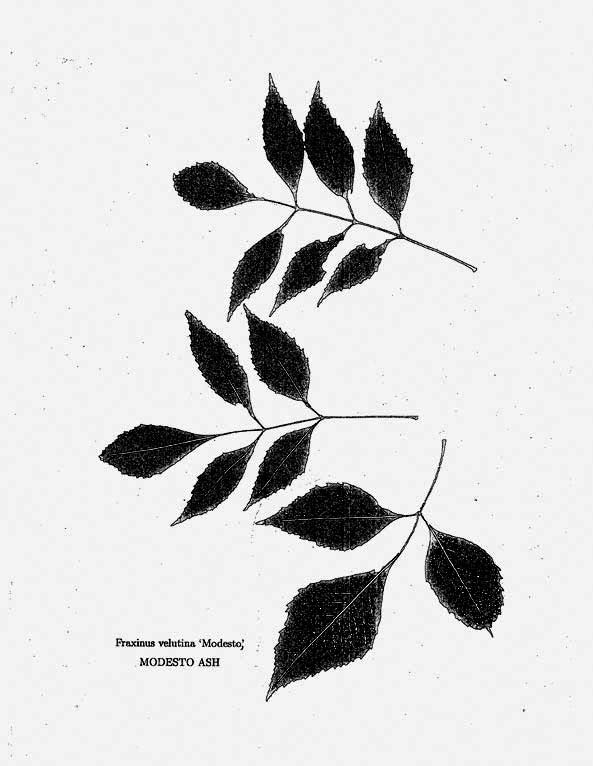Fraxinus velutina ‘Modesto’
 Modesto ash
Modesto ash
This deciduous tree has 6-inch leaves with 3–7 leaflets that are furry underneath. It also has velvety branchlets. Ridges on the gray-brown bark seem to interlace on mature trees. There may be specimens of the wild species on campus, but the cultivar ‘Modesto’ has been widely used. The cloned trees are male; consequently, no winged seed contributes to the litter, not that its absence is very noticeable amidst the copious leaf fall. A good group can be seen on the avenue (formerly known as Via Crespi) between Green Earth Sciences and the Durand Building. Others are to the northwest of Herrin Hall (Biology), west of Old Chemistry, and on the south side of Escondido Mall near Mitchell Earth Sciences. It is used as a street tree in Palo Alto, including Greer Road between California Avenue and Amarillo Avenue.
The ash is one of the last trees to come into leaf in the spring (Chinese pistache, linden, catalpa, and silk tree are others), often delaying two months behind the plum trees, and when in leaf casts a relatively thin shade, letting through a luminous green light. As the Modesto ash often succeeds where other species fail, vast numbers have been planted in California. But the Modesto clone has come under attack by a mutilating disease that leaves the trees partially defoliated through the summer. Consequently, disease is a serious economic matter. This experience points up the need for diversity: new species, as well as new clones.
Name derivation: Fraxinus – classical Latin name for ash; velutina – velvety, referring to the underside of the leaves.
About this Entry: The main text of this entry is from the book Trees of Stanford and Environs, by Ronald Bracewell, published 2005. Sairus Patel added the bark description Dec 2018, and edited the leaf description Feb 2021.





